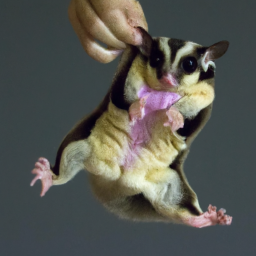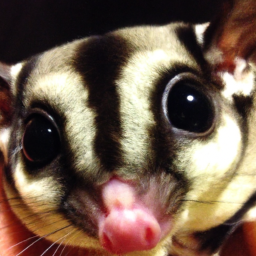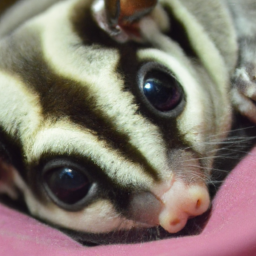How To Find A Lost Sugar Glider In Your House
Hey there! So you’ve found yourself in the predicament of having a lost sugar glider in your house. Don’t worry, I’ve got some helpful tips to help you locate your furry little friend in no time!
In the next article, we’ll go over some effective strategies and techniques to find a lost sugar glider in your house. From creating a cozy and tempting hiding spot to using food and sounds to lure them out, we’ve got you covered. So, stay tuned and get ready to reunite with your adorable sugar glider!
How To Find A Lost Sugar Glider In Your House
Having a sugar glider as a pet can bring so much joy and entertainment into your life. These small, adorable creatures are known for their playful nature and their ability to glide through the air. However, sometimes these little critters can escape from their enclosures and find themselves lost within the confines of your home. Finding a lost sugar glider can be a worrisome and stressful experience, but with the right approach and strategies, you can increase your chances of locating your furry friend. In this article, we will guide you through the process of finding a lost sugar glider in your house using effective techniques and methods. So, let’s get started!
Common Hiding Places
When a sugar glider goes missing, they often seek out small and secluded spaces to hide in. By familiarizing yourself with their common hiding places, you can narrow down your search and increase your chances of finding them quickly. Here are some common hiding places to check:
Under Furniture
Sugar gliders are known for their ability to squeeze into tight spaces. They may crawl under couches, beds, or other furniture to hide. Be sure to check these areas thoroughly, using a flashlight if necessary.
Inside Cabinets
Cabinets provide dark and cozy hideouts that sugar gliders may find appealing. Open your cabinets and carefully inspect them, ensuring that your sugar glider hasn’t crawled inside and made it their temporary home.
In Closets
Closets offer numerous hiding spots for sugar gliders. Check behind clothes, shoes, and other items, as well as on shelves or in corners. Sugar gliders are known to climb, so always remember to look up as well.
In Laundry Baskets
Sugar gliders have a keen sense of smell and may seek out baskets that contain clothes with familiar scents. Check your laundry baskets, especially if they have warm and comfortable items that may attract your sugar glider.
Preparation
Before you embark on your search, it’s essential to make some preparations to create an environment conducive to finding your lost sugar glider. Here are some steps you can take:
Block Exits
To prevent your sugar glider from escaping further or entering areas that may pose a danger, block any potential exits. Close windows and doors leading outside, and use towels or other materials to seal off small openings.
Turn Off Fans
Sugar gliders are small and lightweight, making them vulnerable to strong air currents. Turn off any fans or air conditioning units to prevent your sugar glider from being blown away or injured.
Close Doors
Limiting the areas your sugar glider can roam in can make the search more manageable. Close the doors to rooms that are not in use, focusing your attention on one area at a time.
Search Strategy
When searching for a lost sugar glider, it’s crucial to approach the situation calmly and methodically. Here are some strategies to employ during your search:
Stay Calm
While it’s natural to feel anxious when your pet is missing, it’s essential to remain calm and composed. Sugar gliders can sense your emotions, and panicking may cause them to retreat further into hiding. Take deep breaths and maintain a positive mindset as you embark on your search.
Use a Flashlight
Sugar gliders are primarily nocturnal creatures and are more likely to be active during nighttime hours. Use a flashlight to illuminate dark corners and crevices, making it easier to spot your sugar glider’s reflective eyes or movement.
Listen for Sounds
Sugar gliders may make noises to communicate or indicate their presence. Listen carefully for any rustling sounds, chattering, or the soft patting of their small paws. Pay attention to familiar sounds, as your sugar glider may respond to their name or the sound of their favorite food being offered.
Attracting the Sugar Glider
Getting your lost sugar glider to come out of hiding can be challenging, especially if they are fearful or disoriented. However, there are strategies you can use to attract them and assist in their safe return. Here are a few methods to try:
Use Familiar Scents
Sugar gliders have an excellent sense of smell and are attracted to familiar scents. Place items with your scent or their favorite human or glider companion’s scent near their hiding spots. This may entice them to come out of hiding and investigate.
Offer Food Bait
Sugar gliders are quite motivated by food. Leave their favorite treats or a small dish of their regular food near their hiding spots. The enticing smell may encourage them to venture out in search of something tasty.
Set Up Safe Traps
If your sugar glider is particularly elusive, you can set up safe traps to capture them. Use a humane trap designed specifically for small animals and place it near their hiding spots with tempting treats as bait. Ensure the trap is safe and secure, with no risk of harm to your glider.
Systematic Search
To effectively cover all areas of your home, it’s best to conduct a systematic search room by room. Here are some steps to follow:
Start from Room to Room
Begin your search in one room and thoroughly search every corner, crevice, and possible hiding spot before moving on to the next room. This methodical approach ensures that no area is left unchecked.
Check Small Spaces
Sugar gliders can fit into small spaces and may squeeze themselves into tight corners or gaps. Carefully inspect baseboards, behind furniture, or within wall cavities. Look for any signs of their presence, such as fur or droppings.
Look Up High and Down Low
Sugar gliders are skilled climbers and can navigate heights with ease. Check high shelves, windowsills, and curtain rods. Don’t forget to also look low, as they may have snuck under furniture or into low cabinets.
Collaborate with Others
Finding a lost sugar glider can be a challenging task, so don’t hesitate to seek help from others. Here are some ways to collaborate in your search:
Enlist Family Members
Involve your family members in the search process. Assign specific areas or rooms to each person, making the search more efficient. Different perspectives and extra pairs of eyes can significantly increase your chances of finding your sugar glider.
Inform Neighbors
If your sugar glider has escaped beyond the confines of your home, it’s crucial to inform your neighbors. They may spot your glider in their yards or nearby areas and can help you locate them. Provide them with a description and a contact number, so they can easily reach out if they have any information.
Seek Professional Help
If your search efforts have been unsuccessful, consider seeking the assistance of professionals who specialize in finding lost pets. They have the knowledge, experience, and resources to aid in the search and reunite you with your sugar glider.
Utilize Technology
In today’s digital age, technology can be a valuable tool in finding lost pets. Here are some technological methods you can utilize:
Set Up Motion-Activated Cameras
Place motion-activated cameras in areas where your sugar glider is most likely to traverse. These cameras can capture images or videos of their movements, giving you valuable information about their whereabouts.
Use Pet Tracker Apps
Pet tracker apps are designed to help locate lost pets. Attach a small tracking device to your sugar glider’s collar or harness, and use the corresponding app to track their location in real-time. This can be especially useful if your sugar glider has ventured outside your home.
Create a Safe Environment
Preventing future escape attempts is crucial to the well-being of your sugar glider. Here are some steps you can take to create a safe environment:
Close Off Unsafe Areas
Identify areas in your home that may pose a danger or increase the chances of escape. Close off access to these areas by sealing openings, placing barriers, or modifying the environment to make it less appealing for your sugar glider to explore.
Remove Hazards
Inspect your home and remove any potential hazards that may harm your sugar glider. This includes toxic plants, exposed wires, open windows or balcony doors, and small objects that could be swallowed.
Provide Comfortable Spaces
Ensure that your sugar glider has a comfortable and secure space in their enclosure. Include amenities such as cozy blankets, hiding spots, and toys to keep them mentally stimulated and physically active. A stress-free and enriched environment can help prevent escape attempts.
Be Patient and Persistent
Finding a lost sugar glider may not happen instantly. It’s essential to remain patient and persistent throughout the search process. Here are some things to keep in mind:
Don’t Give Up
Even if your search efforts have yielded no results so far, don’t give up hope. Sugar gliders can survive for extended periods without food or water. Continue your search with determination and remain positive that you will find your furry friend.
Continue Search Efforts
Consistency is key when searching for a lost sugar glider. Dedicate time every day to search for your glider, following the strategies mentioned in this article. The more you search, the higher the chances of locating your sugar glider.
Try Different Methods
If your initial search methods are not fruitful, don’t be afraid to try different approaches. Every sugar glider is unique, and they may respond better to specific techniques or stimuli. Experiment with various methods, scents, or baits to see what works best for your sugar glider.
Can Knowing the Age of a Sugar Glider Help in Finding a Lost One in the House?
Yes, telling sugar glider age can be helpful in finding a lost one in the house. Young sugar gliders are more curious and active, while older ones may be more likely to hide. Knowing their age can guide your search efforts and help you locate a lost sugar glider more efficiently.
Conclusion
Losing a sugar glider can be a distressing experience, but by following the outlined strategies and techniques, you can increase your chances of finding your little friend. Remember to stay calm, utilize systematic search methods, collaborate with others, utilize technology, and create a safe environment. With patience, persistence, and a touch of luck, you will soon be reunited with your lost sugar glider. Good luck!




